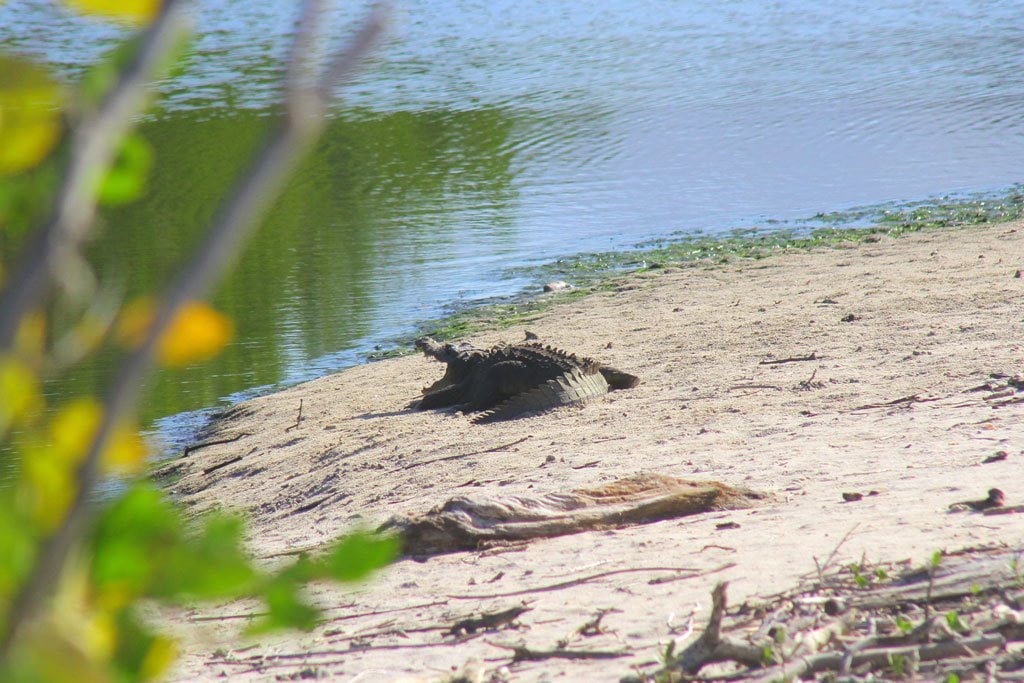Ecosistemas en La Lancha, Nayarit
Cocodrilos y Manglares
 Los Manglares son un Humedal del tipo Estuarinos junto con las Deltas y Marismas de mareas, están formados por árboles muy tolerantes a las sales.
Los Manglares son un Humedal del tipo Estuarinos junto con las Deltas y Marismas de mareas, están formados por árboles muy tolerantes a las sales.
En México existen cuatro especies de mangle: Rojo, Blanco, Negro y Zaragoza o Botoncillo, de las cuales algunas toleran salinidades de hasta 70ups.
Los Manglares desarrollan importante funciones en el ecosistema como la protección contra inundaciones, mejoran la calidad del agua al ser un filtro biológico, son zonas que albergan una gran cantidad de flora y fauna y muy importante previenen la erosión costera, entre otros varios beneficios.
 México está dividido en 5 regiones donde se encuentran los Manglares las cuales son Pacífico Norte, Pacífico Centro, Pacífico Sur, Golfo de México y Península de Yucatán, donde en el estado de Jalisco que pertenece a Pacífico Centro es el estado que más Manglares a perdido teniendo como dato que en 1970-1980 contaba con 8,098ha de manglares y para 2010 ya solo contaba con 2,201ha perdiendo así más del 70% de territorio.
México está dividido en 5 regiones donde se encuentran los Manglares las cuales son Pacífico Norte, Pacífico Centro, Pacífico Sur, Golfo de México y Península de Yucatán, donde en el estado de Jalisco que pertenece a Pacífico Centro es el estado que más Manglares a perdido teniendo como dato que en 1970-1980 contaba con 8,098ha de manglares y para 2010 ya solo contaba con 2,201ha perdiendo así más del 70% de territorio.
En Bahía de Banderas Nayarit se tiene una importante extensión de estos manglares y justamente en la playa “La Lancha” frente a nuestra oficina de Punta de Mita tenemos estos bellos árboles que albergan un flora y fauna impresionante donde se destaca por su tamaño y belleza los Cocodrilos la cual es una especie propia que habita esta región, contrario a la que se piensa y cuenta que los cocodrilos fueron introducidos en esta área, ellos tiene viviendo aquí desde muchos años antes que se encontrará habitada la zona.
 WildMex es una empresa que se preocupa por su casa y los que habitan en ella, por eso toma diversas acciones entre ellas la de concientizar a las personas del cuidado y responsabilidad que tenemos con nuestro ecosistema,
WildMex es una empresa que se preocupa por su casa y los que habitan en ella, por eso toma diversas acciones entre ellas la de concientizar a las personas del cuidado y responsabilidad que tenemos con nuestro ecosistema,  el Jueves 15 de agosto de 2019 se llevó a cabo una plática en colaboración con nuestros amigos del Santuario de Cocodrilos “El Cora” donde se explicó sobre la importancia de los Manglares, sus funciones y la gran diversidad silvestre que en ella se encuentra además de tocar el tema de los cocodrilos para entenderlos mejor y sobre todo desmentir leyendas o historias erróneas que hay alrededor de ellos.
el Jueves 15 de agosto de 2019 se llevó a cabo una plática en colaboración con nuestros amigos del Santuario de Cocodrilos “El Cora” donde se explicó sobre la importancia de los Manglares, sus funciones y la gran diversidad silvestre que en ella se encuentra además de tocar el tema de los cocodrilos para entenderlos mejor y sobre todo desmentir leyendas o historias erróneas que hay alrededor de ellos.
https://www.biodiversidad.gob.mx/ecosistemas/manglares2013/extensionDist.html
https://creho.org/humedales/tipos-de-humedales/


